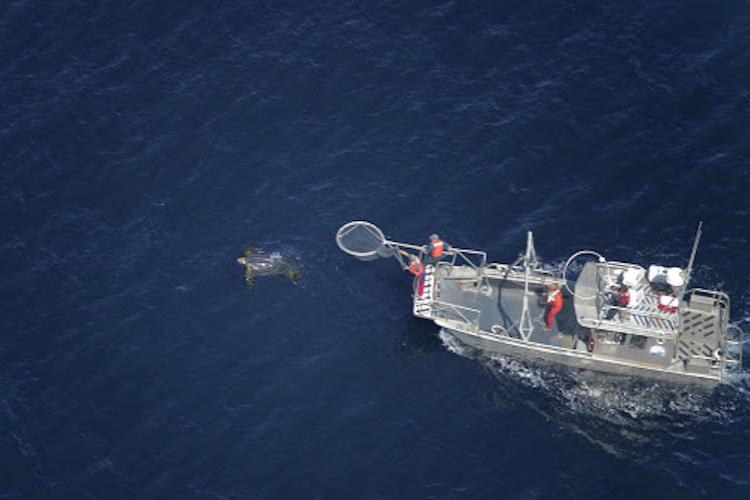HONOLULU (KHON2) — Marylou Staman, who is a marine biologist with the Marine Turtle Biology and Assessment Program (MTBAP) at NOAA Fisheries, has dedicated her career to understanding and protecting Hawaiʻi’s beloved honu (green sea turtles).
Staman leads research on these honu in the remote islands of the Pacific. Her research is specifically around the Papahānaumokuākea Marine National Monument.
Her work is crucial in monitoring the health and population of honu, a species that plays a vital role in Hawaiʻi’s marine ecosystem.
Staman’s career with NOAA Fisheries began in 2017, and she has spent much of her time working in remote field camps, often off the grid with no internet access.
“We would go up to islands where we have our turtle camp for months at a time,” Staman explained. “We’d study the turtles that migrate to these atolls to nest and lay their eggs.”
One of the most important nesting areas is Lalo where up to 96% of all honu in the Hawaiian archipelago come to reproduce.
“Lalo is the basket that holds all the eggs,” Staman says. “It’s the best place for us to monitor how the turtles are doing, how many are nesting, and how many eggs are laid.”
One key aspect of Staman’s research is the Honu Count program. This program is part of NOAA’s tracking system, but it also allows the public to help track honu sightings across Hawaiʻi.
The program uses non-toxic paint to mark turtles with unique identification numbers.
“We use a number about this size on the lower right side of the turtle’s shell,” she explained. “This allows us to track individual turtles without disturbing them too much.”
These painted turtles can then be spotted by beachgoers or snorkelers when they return to Hawaiʻi’s main islands.
“When people see these turtles with the numbers, they can report it, and that helps us with population assessments,” Staman said.
The Honu Count program provides an easy way for people to get involved.
“If you see a turtle with a number, just go to the Honu Count website and report the sighting,” Staman said. “You can also call our hotline to report sightings of injured or sick turtles or monk seals. It’s a great way for people to connect with the research we’re doing and make a real difference.”
Honu Count is not just about tracking turtles. It’s also about spreading awareness and connecting people to the environment.
“When people see a honu, it’s like a message that the turtle has traveled safely back from the remote islands to its home in the main Hawaiian islands,” Staman said. “That’s the best message for us—it shows that our turtles are safe and thriving.”
The program is also a way for people to get involved in protecting Hawaiʻi’s ecosystem. Staman emphasized that reporting sightings is an easy, impactful way to contribute to conservation efforts without adding more waste to the environment.
“If people feel motivated but don’t want to contribute to more debris in the ocean, they can report sightings and help with our research,” she said.
The community involvement in the Honu Count program has become an essential part of the work.
“It’s incredible how people connect with the research, with the ʻāina, and with the animals,” Staman said. The program not only helps monitor the turtle population but also raises awareness about the importance of protecting marine life.
For those interested in getting involved, reporting a honu sighting is simple.
“Just search for Honu Count online, and you’ll find our page with all the information,” Staman explained. “You can also call the NOAA Marine Wildlife hotline at 888-256-9840 or email us at PR_FSC_info@noaa.gov for more details or if you have questions.”
Hawaiʻi’s ecosystem depends on the health of species like honu, and Staman’s work is crucial in ensuring their survival.
By tracking and studying these turtles, Staman and her team help protect not only the turtles but also the broader marine environment in which they live.
“It’s all connected; the health of the turtles is tied to the health of the ocean,” Staman added. “When we protect honu, we’re protecting the whole ecosystem.”
